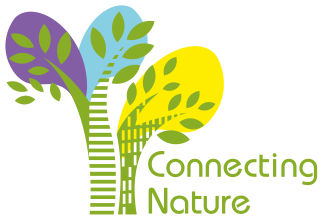
The European Commission defines nature-based solutions to societal change as solutions that are “inspired and supported by nature, which are cost-effective, simultaneously provide environmental, social and economic benefits and help build resilience. Such solutions bring more, and more diverse, nature and natural features and processes into cities, landscapes and seascapes, through locally adapted, resource-efficient and systemic interventions. ”
Nature-Based Solutions therefore provide multiple benefits for biodiversity. Any approaches that do not improve biodiversity, are not based or delivering on a range of ecosystem services, are not Nature-Based Solutions.
Nature-based solutions protect, sustainably manage and restore natural or modified ecosystems, which address challenges facing humanity (e.g. climate change, food and water security or natural disasters). At the same time nature-based solutions bestow wider benefits to human well-being and biodiversity.
Nature-based solutions are quite a new concept and the phrase is not widely used. This is changing however, as society seeks to effectively tackle environmental issues through and for innovation.
So, what does an urban nature-based solution look like? Street trees, parks and urban green areas provide a range of natural benefits such as intercepting dust, toxins and noise, sheltering and cooling property, sinking carbon and buffering flooding. They also provide spaces for recreation, fostering well-being, and a host of other social benefits.
However, thinking on nature-based solutions has evolved to include more benefits, such as increased biodiversity, species conservation, energy production and waste management; while promoting social cohesion using collaborative processes.
This means that the ideal nature-based solution uses a comprehensive co-design and co-creation of ideas process, with strong innovation possibilities, leading to multiple ecological, environmental and social gains. It is a big task; but this approach will ultimately change the way we make and manage our urban areas, and lead to more resilient and sustainable urban living.
Dr Stuart Connop – Connecting Nature’s Nature-Based Solutions Technical Lead suggests that defining exactly what is a nature-based solution is still an evolving area. This is because there are different definitions around and, under most of these definitions, there is some flexibility for interpretation in terms of where nature-based solutions begin and end. This can create a problem for cities that are already used to communicating about green & blue infrastructure and are trying to introduce nature-based solutions as an emerging concept. In general, his approach is to look at the process involved in developing or changing management of a space and ask whether it follows these 5 simple nature-based solutions principles:
i) Does it use nature/natural processes?
ii) Does it provide/improve social benefits?
iii) Does it provide/improve economic benefits?
iv) Does it provide/improve environmental benefits?
v) Does it have a net-benefit on biodiversity?
Generally, if you can answer yes to all five of these principles, there is a good chance it can be argued as a nature-based solution. This is a somewhat simplified approach, as there should also be consideration of local contextualisation in relation to these principles. However, as a basic introduction to nature-based solutions, these questions represent a relatively accessible entry point. And, once it has been established as a nature-based solution, a simple first step towards evaluating the benefits of the nature-based solution can be taken by adding HOW in front of each of the 5 principles.

